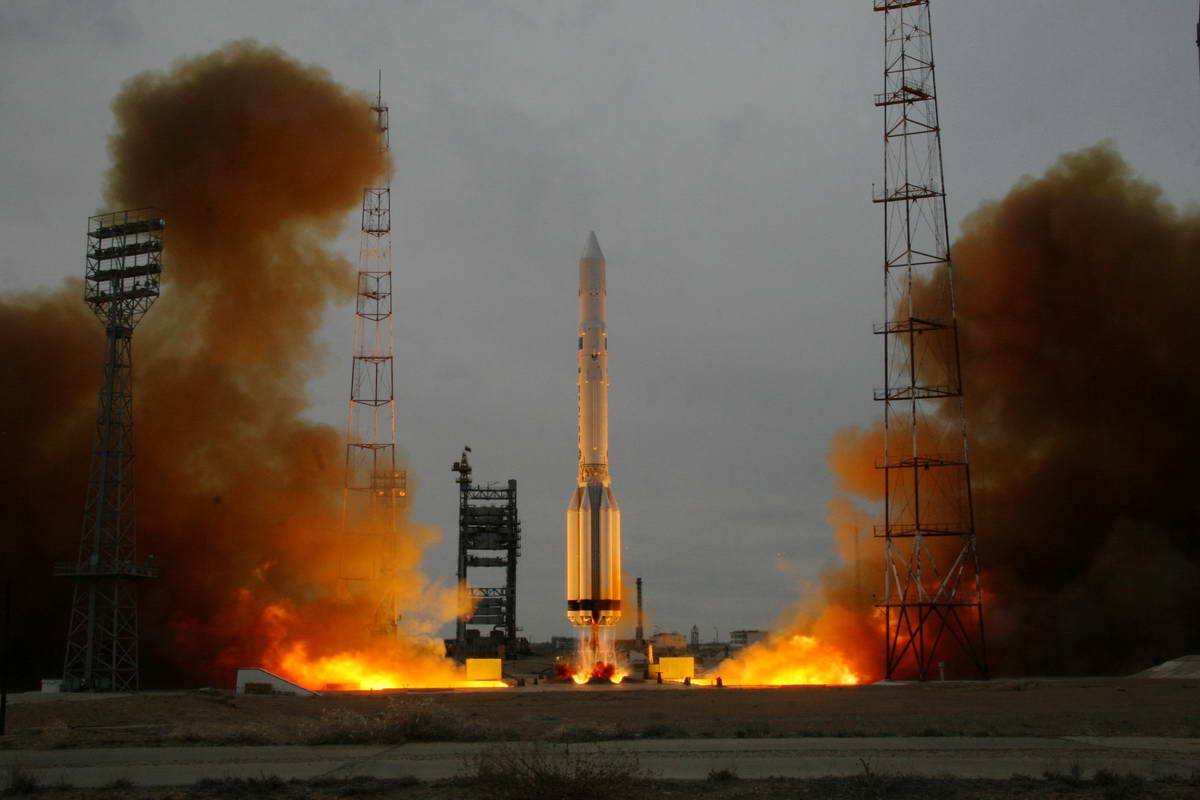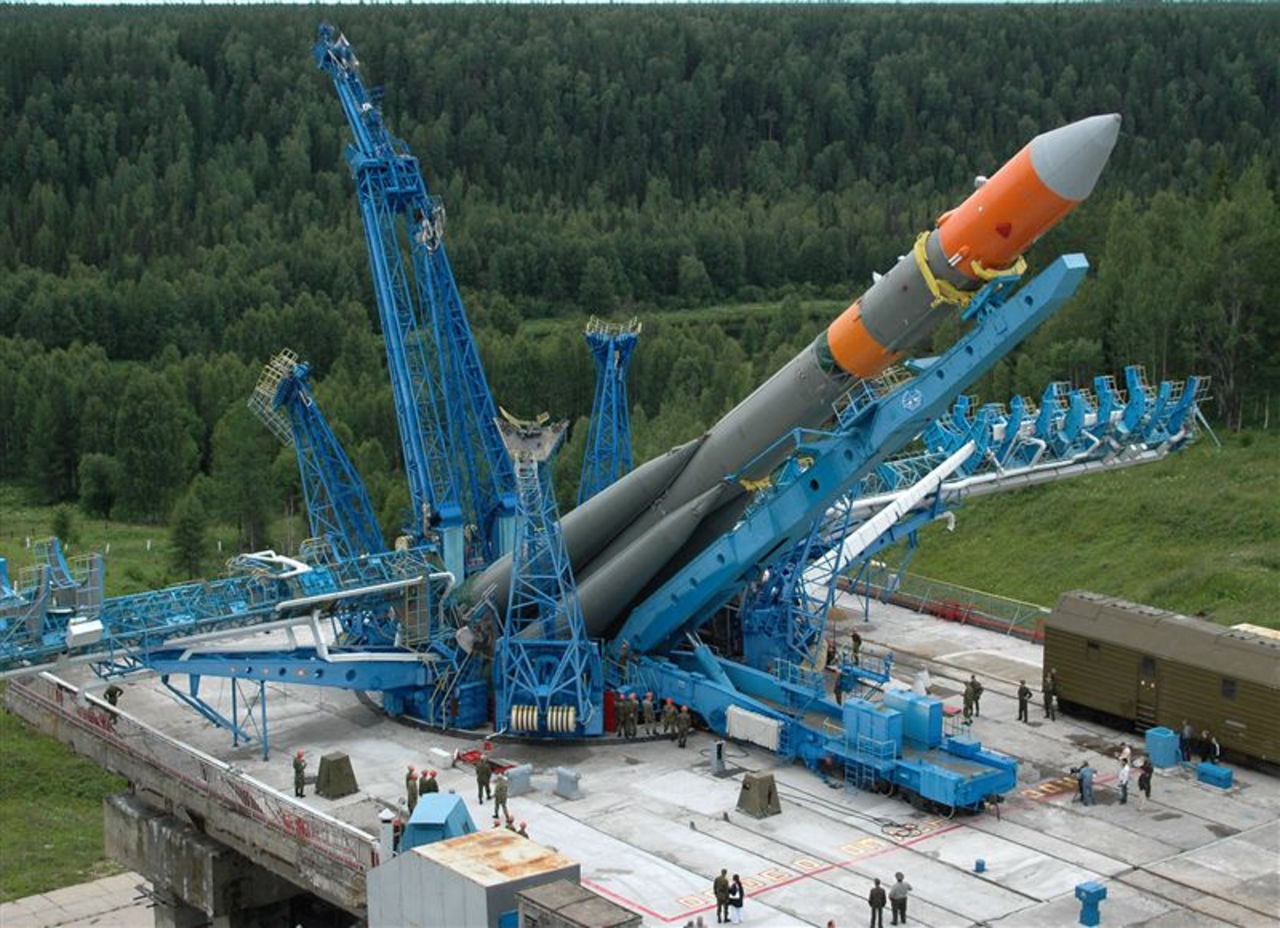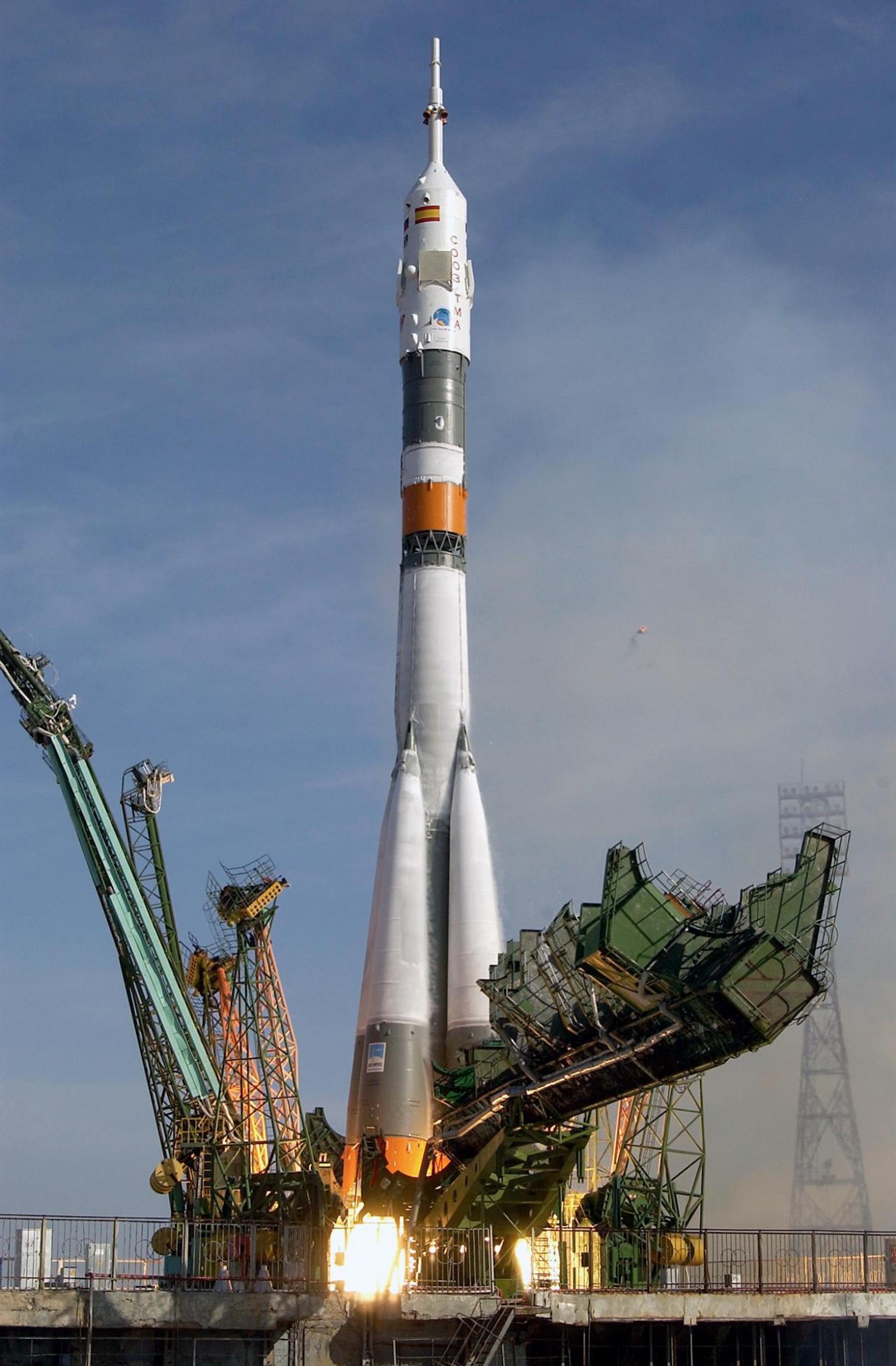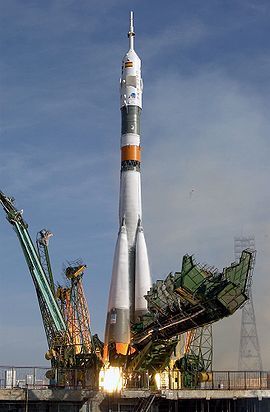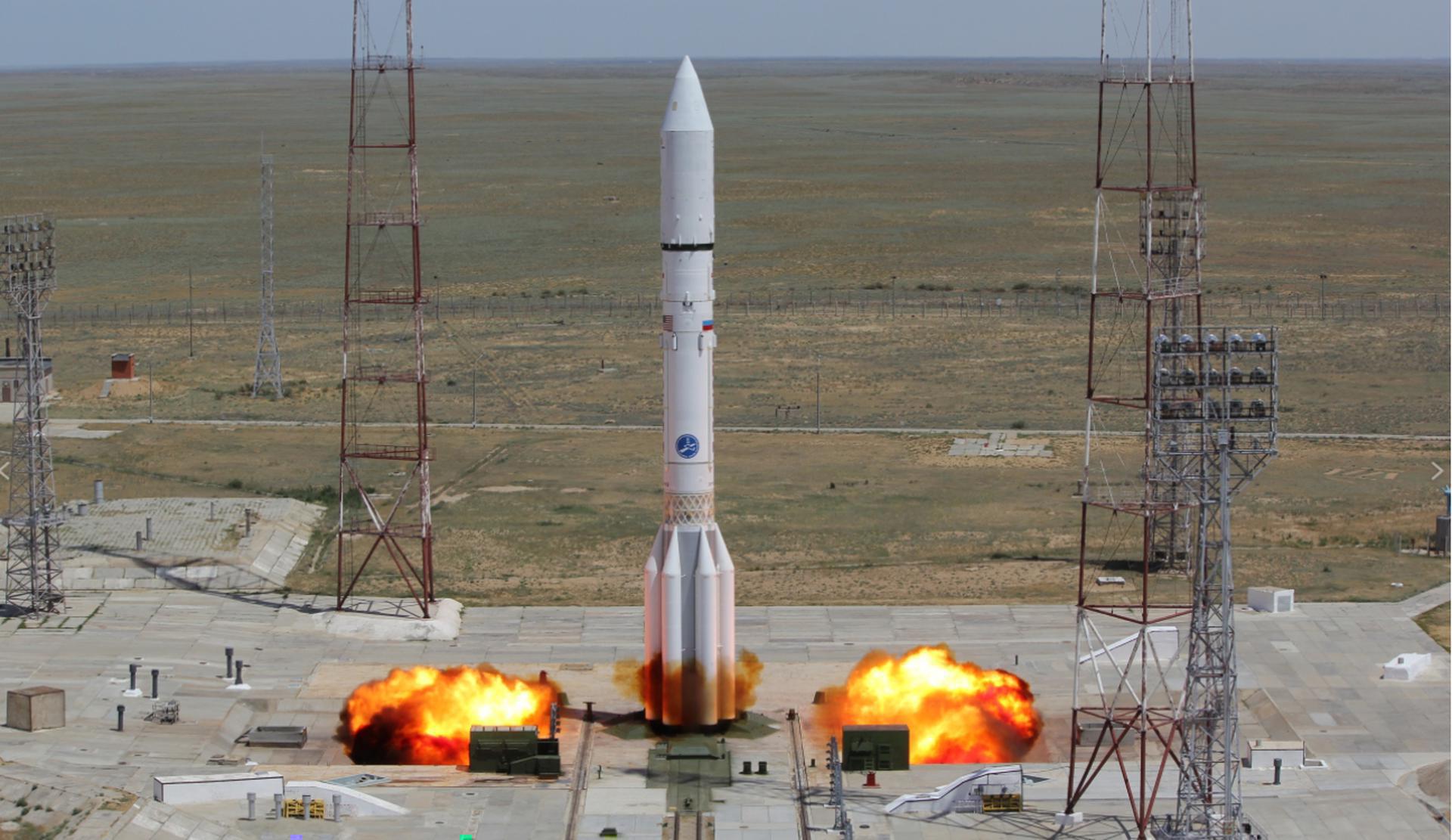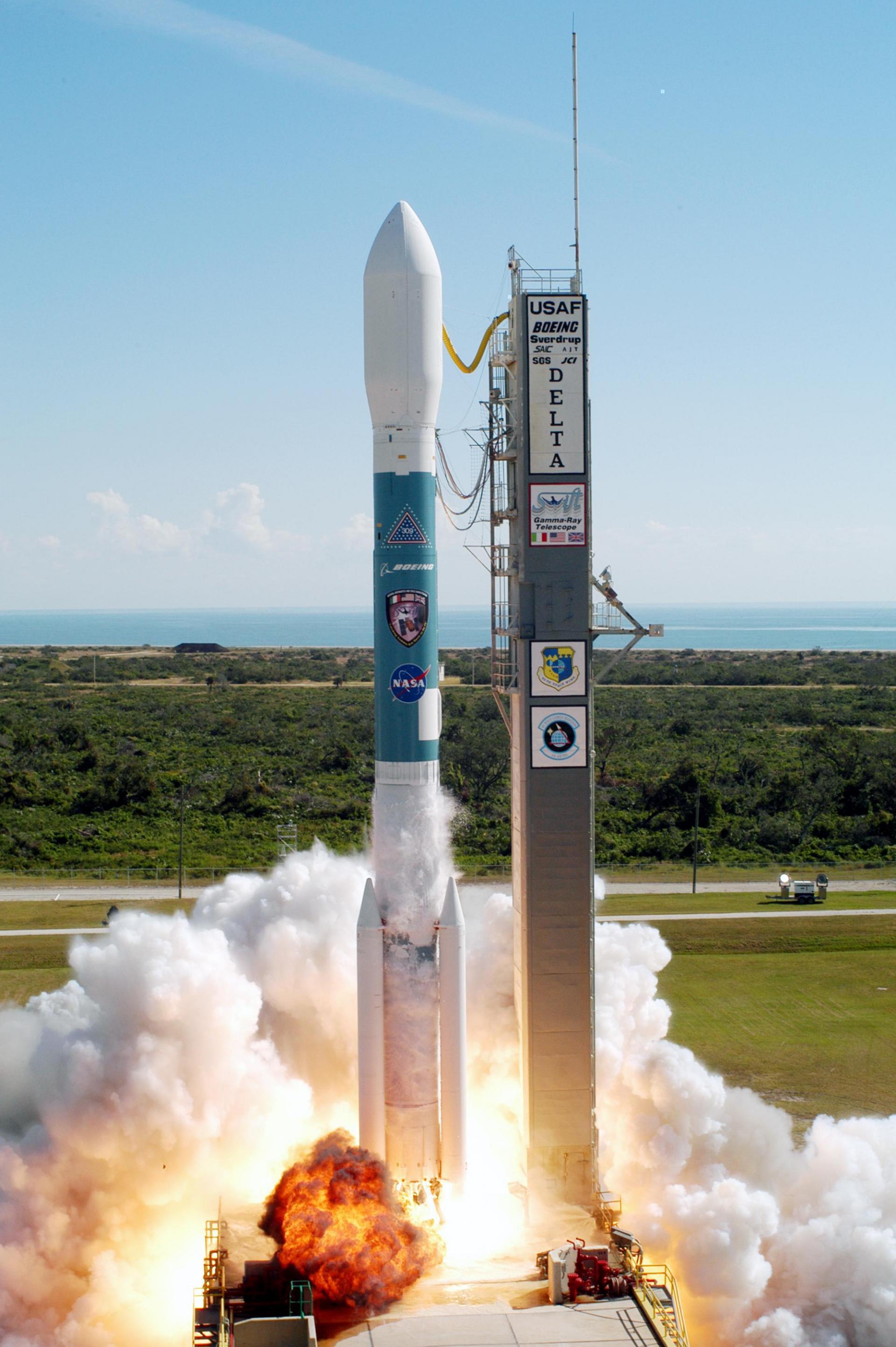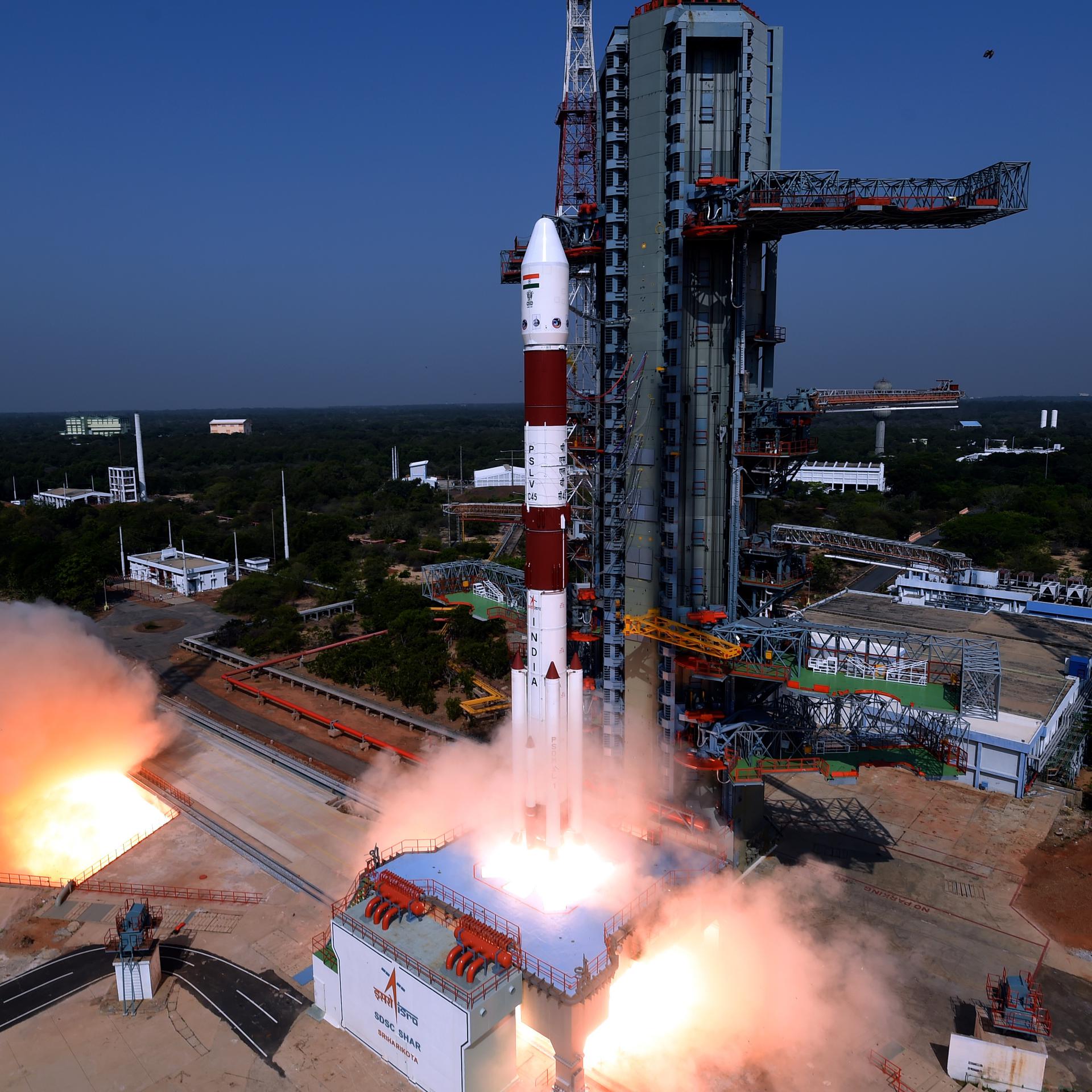Previous Spaceflight Launches
Filter by Agency, Locations or Vehicles
Show All LaunchesProton | Ekspress AM-3
Khrunichev State Research and Production Space Center | RussiaBaikonur Cosmodrome, Republic of Kazakhstan
June 24, 2005, 7:41 p.m.
Status: Launch Successful
Mission:
The Ekspress-AM 2 and 3 series are communications satellites for russian domestic communication services. The lifetime of the spacecraft has been increased to 12 years. While the spacecraft itself is built by russian RSCC (Kosmicheskiya Svyaz), the communication payloads are built by Alcatel.
Geostationary OrbitZenit | Intelsat IA-8
Sea Launch | RussiaSea Launch
June 23, 2005, 2:03 p.m.
Volna | Cosmos-1
Makeyev Rocket Design Bureau | RussiaSea Launch
June 21, 2005, 7:46 p.m.
Status: Launch Failure
Mission:
Cosmos 1 was a project by Cosmos Studios and The Planetary Society to test a solar sail in space. As part of the project, an unmanned solar-sail spacecraft named Cosmos 1 was launched into space at 15:46:09 EDT (19:46:09 UTC) on June 21, 2005 from the submarine Borisoglebsk in the Barents Sea. However, a rocket failure prevented the spacecraft from reaching its intended orbit.
Low Earth OrbitMolniya-M | Molniya-3K
Russian Space Forces | RussiaPlesetsk Cosmodrome, Russian Federation
June 21, 2005, 12:48 a.m.
Soyuz U | Progress M-53
Russian Federal Space Agency (ROSCOSMOS) | RussiaBaikonur Cosmodrome, Republic of Kazakhstan
June 16, 2005, 11:09 p.m.
Kaituozhe-1 | KT-1 satellite?
China Aerospace Science and Industry Corporation | ChinaTaiyuan Satellite Launch Center, People's Republic of China
June 9, 2005, midnight
Soyuz-U-PVB | Foton-M No. 2
Progress Rocket Space Center | RussiaBaikonur Cosmodrome, Republic of Kazakhstan
May 31, 2005, noon
Status: Launch Successful
Mission:
Foton-M No.2 was an unmanned Foton-M spacecraft which carried a European payload for the European Space Agency (ESA). The spacecraft carried a 600-kilogram (1,300 lb) payload, including 385 kilograms (849 lb) of experiments; consisting of 39 experiments in fluid physics, biology, material science, meteoritics, radiation dosimetry and exobiology (BIOPAN-5). Some of the experiments were designed by the ESA's student programme. One notable experiment tested the ability of lichen to survive in space. It was successful, as the lichen survived over 14 days of exposure to space.
Low Earth OrbitProton-M Briz-M | DirecTV-8
Khrunichev State Research and Production Space Center | RussiaBaikonur Cosmodrome, Republic of Kazakhstan
May 22, 2005, 5:59 p.m.
Status: Launch Successful
Mission:
The DirecTV 8 satellite provides selectable medium and high power Ku-band broadcast services to the U.S. on up to 32 transponders. The service is optimized to support the current and next generation higher coding rate services that DirecTV provides.
Geostationary OrbitDelta II | NOAA 18
United Launch Alliance | United States of AmericaVandenberg SFB, CA, USA
May 20, 2005, 10:22 a.m.
Status: Launch Successful
Mission:
NOAA-18, known before launch as NOAA-N, is a weather forecasting satellite run by NOAA. NOAA-N (18) was launched on May 20, 2005, into a sun-synchronous orbit at an altitude of 854 km above the Earth, with an orbital period of 102 minutes. It hosts the AMSU-A, MHS, AVHRR, Space Environment Monitor SEM/2 instrument and High Resolution Infrared Radiation Sounder (HIRS) instruments, as well as the SBUV/2 ozone-monitoring instrument. It is the first NOAA POES satellite to use MHS in place of AMSU-B. NOAA-18 also hosts Cospas-Sarsat payloads.
Sun-Synchronous OrbitPSLV | Cartosat-1
Indian Space Research Organization | IndiaSatish Dhawan Space Centre, India
May 5, 2005, 4:45 a.m.
